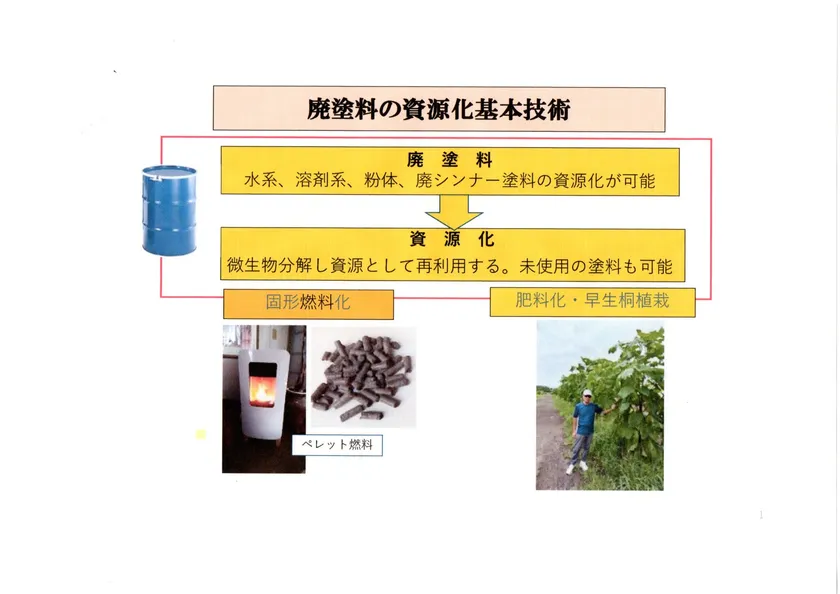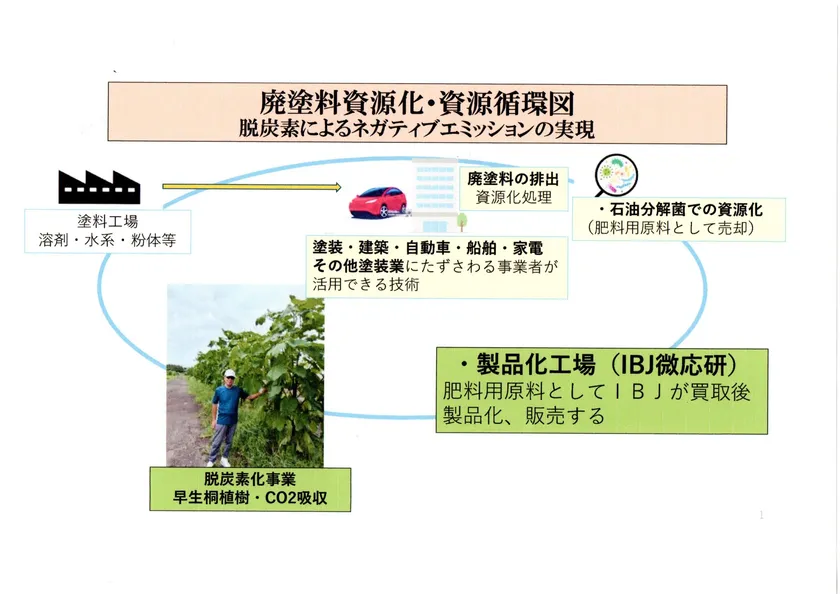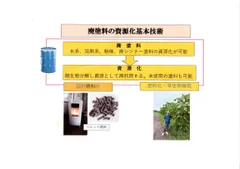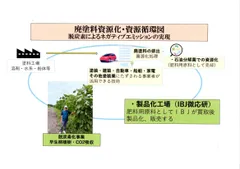Paint Resource Conversion Technology Completed Using Petroleum-Degrading Bacteria Realization of Negative Emissions through Fertilization and Decarbonization of Waste Paint Started providing technology to the paint industry
一般財団法人 Inbound Japan 微生物応用研究所
Inbound Japan Microbial Application Laboratory (located in Akiruno, Tokyo) has perfected a technology to convert paint into fertilizer using microorganisms.
The company has begun practical application of the technology in resource recycling and decarbonization projects targeting waste paint. The company will begin offering the technology to the paint industry.
This technology was presented at the 2nd Lecture Meeting of the Japan Coating Technology Association in 2023 and in the May 2024 issue of Kensetsu Setsubi Sogo Kyokai, the journal of the Building Equipment Association of Japan.

Basic Technology for Recycling Waste Paint
■Background
Most uncoated paints are incinerated as waste paint, releasing a large amount of CO2 into the atmosphere. By utilizing the decomposition ability of microorganisms to convert waste paint into fertilizer, which is then used as a fertilizer for planting early-growing paulownia trees with high CO2 absorption capacity, resource recycling and negative emissions have been realized.
The cost of this technology is equivalent to or less than the cost of disposing of waste as industrial waste, confirming that it is a highly economical technology.

Resource Recycling of Waste Paint and Resource Circulation Chart
About the research results
All types of paints can be recycled.
Waste paint can be recycled into resources, including water-based paint, solvent-based paint, powder, paint sludge, and paint thinner waste.
No need for a large scale plant.
Waste paint can be recycled by mixing microorganisms for decomposition with waste paint and causing a decomposition reaction. A simple mixer is all that is required, and no large-scale plant is needed.
This system can be used by all paint manufacturers and local painting companies that handle paints.
All waste paints generated in the process of paint manufacturing and painting can be recycled.
The stability of the technology has been proven by the companies that have already introduced it.
This technology was developed in 2003 in collaboration with Honda Giken, and was introduced to Nissan Motor's Tochigi Plant in 2015, where it has been used to recycle paint sludge stably for 10 years.
We will provide detailed technical guidance to any new customers to ensure successful recycling.
Company Profile
Company name: Inbound Japan Foundation
Representative Director: Futahiro Kato
Location: 6F, 2-121 Shinmatsudo, Matsudo, Chiba 270-0034, Japan
Establishment: February 2011
Business description: Conducts comprehensive surveys and research on the demand for Japanese products, services, technology, culture, etc. in the Asian region.
Comprehensive research, R&D support, and consultation services for the demand of Japanese products, services, technology, culture, etc. in the Asian region.
R&D support business: Recycling of paint using petroleum-degrading bacteria
URL: http://www.ib-j.org/
For inquiries from the general public, please contact
Inbound Japan Headquarters Office
TEL: 047-369-7154
FAX: 047-349-6112
- Category:
- Services
- Genres:
- Technology General Business Economy(Japan)

